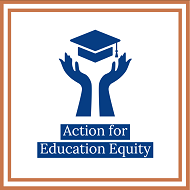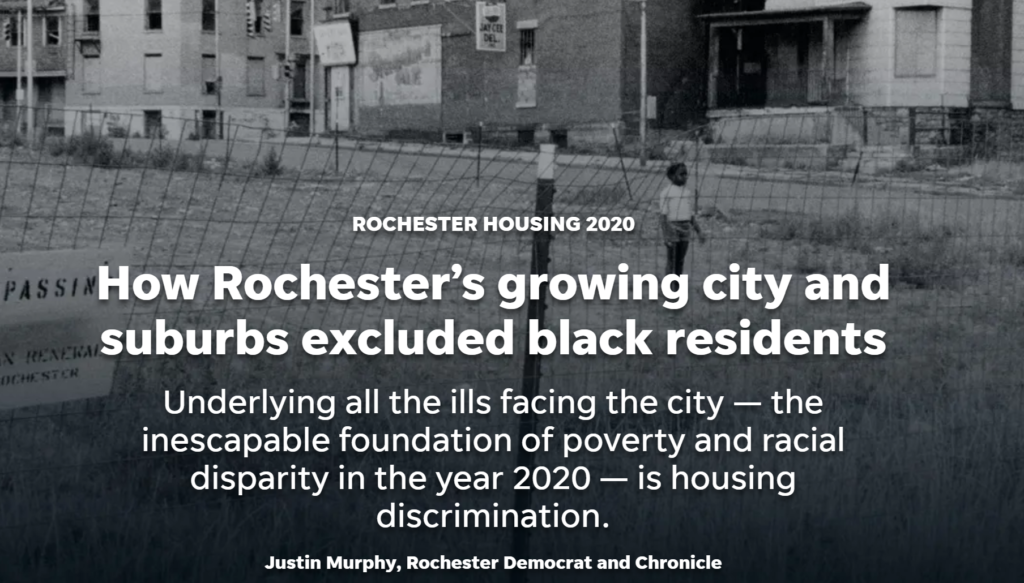How is the Rochester City School District (RCSD) funded?
RCSD is a fiscally dependent school district, meaning it has no authority to raise property taxes. Instead, the City of Rochester provides a fixed amount—$119.1 million annually since 2007—known as the City’s Maintenance of Effort. This amount is the same regardless of enrollment, inflation, or changes in property values. Only the five biggest (Big 5) school districts in New York State are fiscally dependent: Buffalo, Rochester, Syracuse, Yonkers, and New York.
The Maintenance of Effort is not enough to fund the RCSD. The rest of the money to run the district comes from aid from NY State and the Federal Government.
Here is chart showing the breakdown of funding for the year 2019-2020 prepared by The Children’s Agenda.
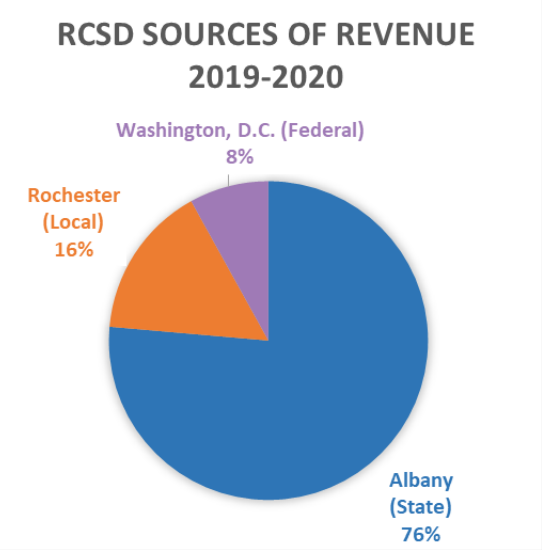
Why does the source of the money matter?
RCSD has no control over how much it will receive from NY State. It can change with little warning and historically it has not been enough to meet the needs of RCSD students.
The amount of money NY State gives to the RCSD is calculated using the Foundation Aid formula. Here is an explanation of how that formula should work from AQENY:
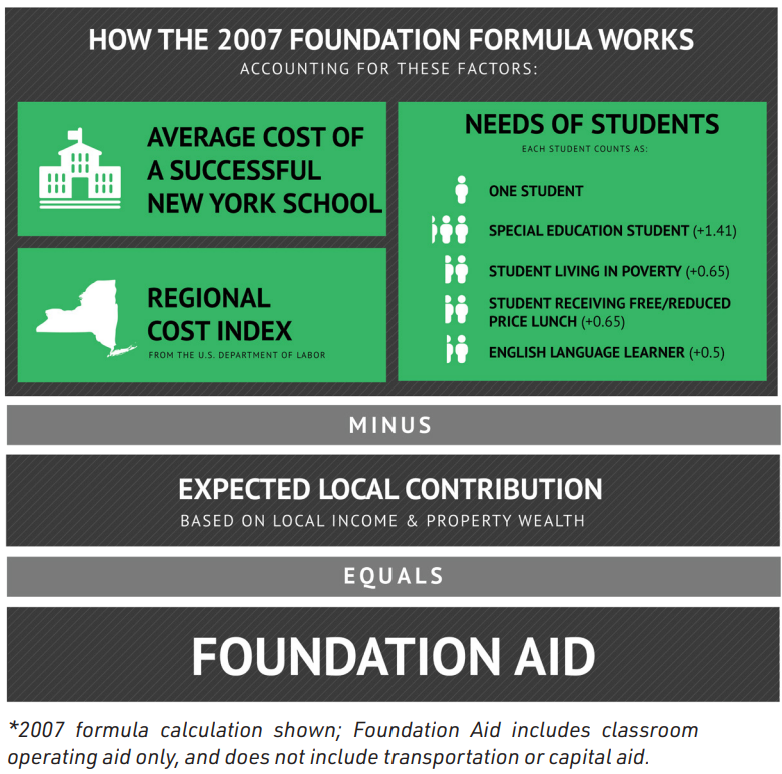
The formula was agreed in 2007 but the phase-in stalled and it was not fully implemented for 16 years. In 2021 NY State committed to fully funding the foundation aid formula with funding increasing each year until it was finally completely implemented in school year 2023-24.
The full funding of this formula does make a huge difference to the RCSD, however, it will take years to address the issues that chronic underfunding has created. Every year since 2007 the NY State Regents has published the amount that school districts should have received based on the formula and every year NY State did not provide that amount. The difference in 2019-20 between what the Regents published and the amount RCSD received was $86 million. That difference, year after year, is in the tens of millions leading to a chronic underfunding which prevents students from receiving the level of investment they need to succeed.
The NY State Reagents published supplementary presentation to demonstrate the difference between what was needed and what was provided across the state.
The following chart covering the period of 2007 to 2021 shows the amounts paid between in blue and the difference between the amount paid and the amount that should have been paid under the formula in orange in Billions. It shows a deficit for the year 2019-20 alone of $3.72 Billion across NY State!
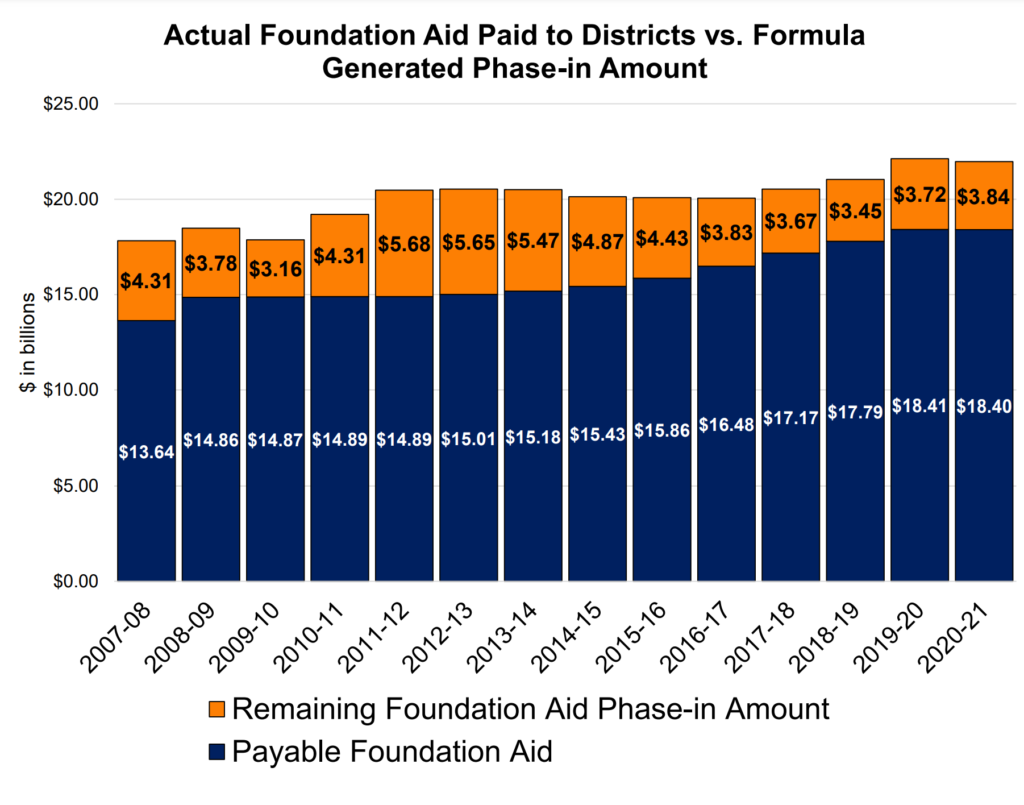
That deficit between need and funding did not impact all districts equally. Districts with a high level of need and a small tax base for revenue need more support and so were more impacted by the State’s failure to fund the formula. The Regents published another chart to show this. Districts with High Need are places like the RCSD, Buffalo and Syracuse City Districts. Again the numbers are shown in Billions of dollars.
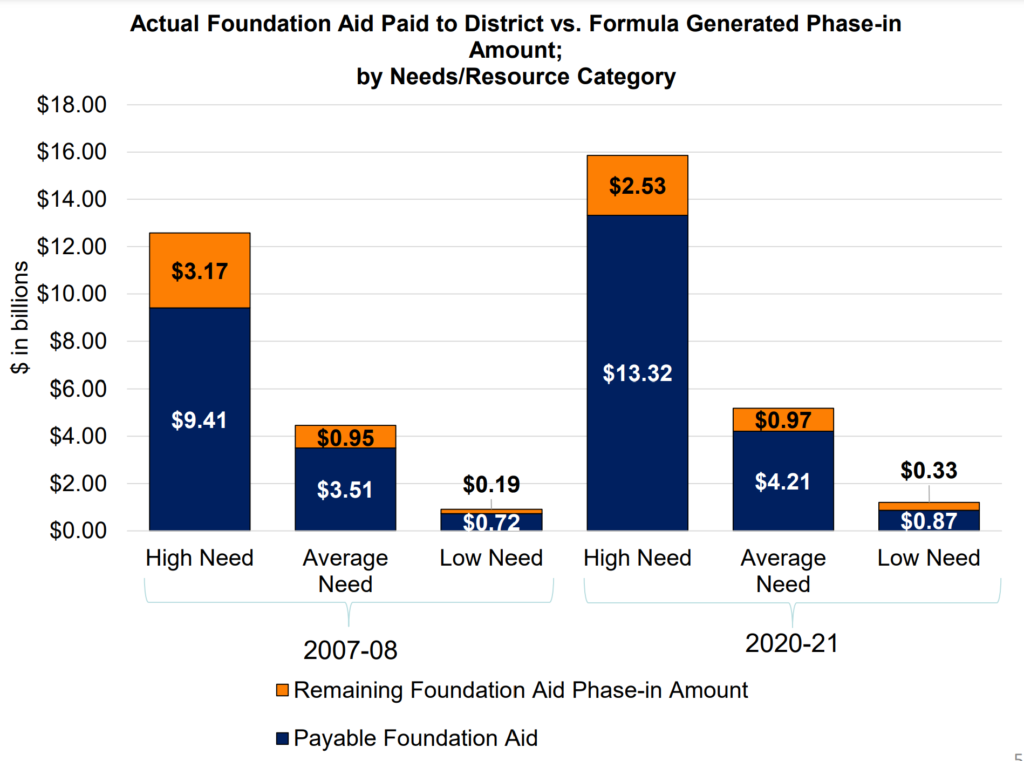
Due to the time taken to implement the Foundation Aid formula it is actually now outdated. In April 2024 NY State asked the Rockefeller Institute for Government to review the formula and they published recommendations for improvements in December of that year. The impact of any changes to the funding of the RCSD could be critical to whether students have the resources they need to succeed.
Why does RCSD need so much money?
RCSD has a far higher concentration of students in need of support to achieve their potential. Those students need more services and that costs more money.
Below are some charts to show the difference in need across Monroe County.
Rochester City and the RCSD has a far higher concentration of students who are economically disadvantaged, who require more investment to overcome the barriers that poverty causes to education.

RCSD has a far higher concentration of students with special needs. The programs and supports needed for them to succeed have significant costs.

RCSD has a far higher concentration of English Language Learners (better described as multi-language learners). For the year 2019 -2020 RCSD had at total of 75 different languages spoken as the home language of students. Translation and support services to communicate with families are expensive and require significant logistic support.

The Foundation Aid formula funds the RCSD based on these increased needs and is designed to ensure that each student has the support they need to succeed. However, special education students in 4th Grade in the 2023 -24 school year (for example), did not received the correct level of support during Kindergarten, 1st Grade, 2nd Grade, and 3rd Grade and therefore they will have significant challenges to overcome even thought more consistent need based funding is now available.
Why is the need so concentrated in Rochester City?
Because of racist policies adopted in Monroe County, black and brown families were denied the same opportunities as white families to move to suburbs and accumulate wealth. This means they were, and continue to be, forced to live in small areas of Rochester City and those areas are under invested in.
The suburbs surrounding Rochester have built on that wealth and created systems were wealth generated by those working in the city and living in the suburbs is spent in the small local towns, rather than shared with the city to ensure the economic prosperity of the whole county (known as wealth hoarding).
This has become so extreme that 5 of the top 50 most segregated school borders in the entire United States are between RCSD and its suburban neighbors.
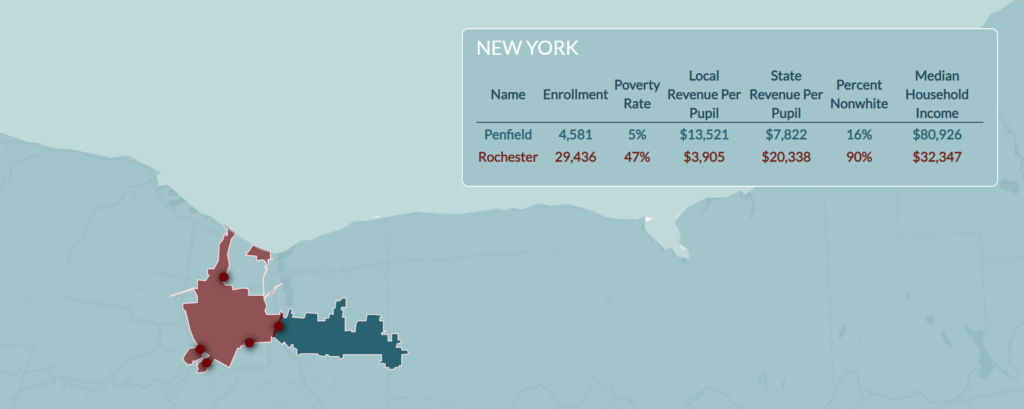
The suburbs of Rochester continue to adopt policies which make it difficult for those in poverty, new immigrants and refugees, and families with special needs to live in those areas. Those barriers include:
– failing to provide affordable housing,
– not having an adequate public transport system,
– not providing support services.
The following presentation from Simeon Banister and Shane Wiegand hosted by the Levine Center to End Hate and TedX Rochester explores the history of racism as well as the ongoing economic impact.
You can find out more about Monroe County’s history from the following videos and articles:
You can find out more about the long term differences in wealth and race between the districts as a result of those policies from EdBuild.
You can view local records on the history of redlining in Rochester at Our Local History Resistance Mapping Website.
Resources to find out more about Education Funding Inequality
You can find out more about the hidden challenges faced by RCSD from The Children’s Agenda.
You can find out more about the recent budget shortfall in the RCSD from The Children’s Agenda.
